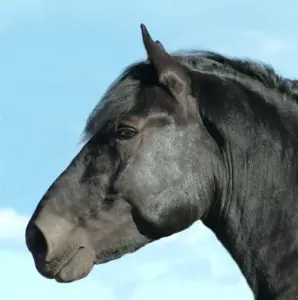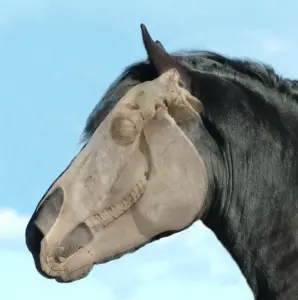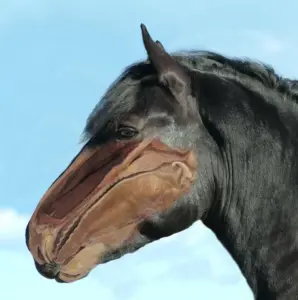Address
304 North Cardinal
St. Dorchester Center, MA 02124
Work Hours
Monday to Friday: 7AM - 7PM
Weekend: 10AM - 5PM
Address
304 North Cardinal
St. Dorchester Center, MA 02124
Work Hours
Monday to Friday: 7AM - 7PM
Weekend: 10AM - 5PM


By RITTERMANN


By RITTERMANN

The first thing that meets our eyes when we study the horse mouth anatomy is the outer visible lips and cheeks. Horse lips are very sensitive and only covered by a thin layer of skin. The amount of skin is varied by the amount of flesh from slight and often very sensitive horses to thick and fleshy mouths often with somewhat lower sensitivity.
When we put a bit in the horse mouth and put pressure on – It will come in contact with the corner of the horse lips next to the cheeks. Because the lips are sensitive and with thin skin there is risk of scars and sores if the bit is ill-fitted, has loose rings or the horse is ridden by a rider with hard hands. The lips should be checked regularly on riding horses to avoid severe injuries.
Bits like the SweetHeartBit work against the horse’s cheeks, this prevents the bit from being pulled through the horse mouth. This is particularly helpful when teaching young horses to steer or horses that otherwise need more guidance.

When we look into the horse mouth we see the teeth and the teeth free area with soft tissue between the incisors and molars called the bars.
It is important to the horse wellbeing that the teeth function well and regular visits from a horse dentist can help prevent problems that might otherwise arise due to dental challenges. Many bit problems have been solved by horse dentist through the years especially problems like wolf teeth.
The bars are the gaps between the molar and incisor teeth. This area is highly sensitive and often a thin soft tissue covering the bone of various shape from sharp V-shape to broad and flat bone. One of the advantages of the SweetHeartBit is that pressure is lifted from the often sensitive bars to the corner lips.

The horse tongue is a large and extremely strong muscle with thousands of highly sensitive nerves. The tongue can vary very much in shape and size. In many cases the horse mouth leaves only little space for a bit to fit in between the tongue and the highly sensitive palate in the upper jaw. See for yourself on the picture on the right. Large tongues restrict the ability of the bit to reach and act on the bars.
It is important to assess the shape, size and condition of the horse mouth, tongue and palate to establish how much room there is to accommodate a bit, based on this examination you should choose a suitable bit for your horse.